This is a continuation of the events from yesterdays post where an American White Pelican had repeatedly tried to swallow a very large, headless carp but due to the size of the fish and persistent pressure from other pelicans the effort (and the fish) had been abandoned.
Two minutes later a different pelican decided to have a go at the fish (you can tell they’re different birds by the size of their “horns” protruding from their upper mandibles).
All images are presented in the order they were taken.
The second pelican scooped up the fish…
and attempted to get the entire thing into its pouch…
which wasn’t easy.
While this was going on the bird could see other pelicans starting to move in…
so this bird tried to beat a hasty (for a pelican) retreat. This was the first time I’ve ever noticed one of these heavy-bodied pelicans paddle so hard that its feet and legs came far out of the water.
As it paddled it continued the attempt to swallow the fish. I’ve cropped this image as I have to show the tip of the bill of the other pelican moving in.
The second pelican reached over the entire body of the first bird with its long bill and neck…
but then backed off for a moment as the first bird made one more desperate attempt to get the fish down. There were times that I was simply amazed at how large the pouch is capable of stretching. I read one account (National Geographic) that said the pouch is capable of holding the equivalent of two flushes of toilet water.
Now things began to get a little nasty. Though at this point the fish couldn’t actually be seen the aggressor repeatedly closed its bill over the entire head and part of the pouch of the other bird. I assume this was an attempt to get the first pelican to release the fish.
In-between attempts the aggressor would momentarily back off but not by much and it was absolutely relentless in its pursuit.
Here we get a relatively good look at the action. Pelicans have a mean-looking hook called the mandibular nail at the end of their bill that is used to hold on to slippery fish. At one point I saw (and photographed) this hook go into the eye of the bird with the fish but apparently no damage was done.
The pelican with the carp would alternate between attempts at swallowing the fish and efforts to escape its tormentor…
but sometimes it would do both.
I’ve cropped this image a little tighter to show better detail of one of the interesting postures of the bird with the fish. The other pelican is just out of frame to the left.
In the end there were no winners – certainly not the headless carp and neither pelican (in part 1 or part 2 of this post) was able to swallow the fish. Immediately after this photo was taken both birds moved far off but I’m confident that the fish was simply released, as it had been once before.
Ron


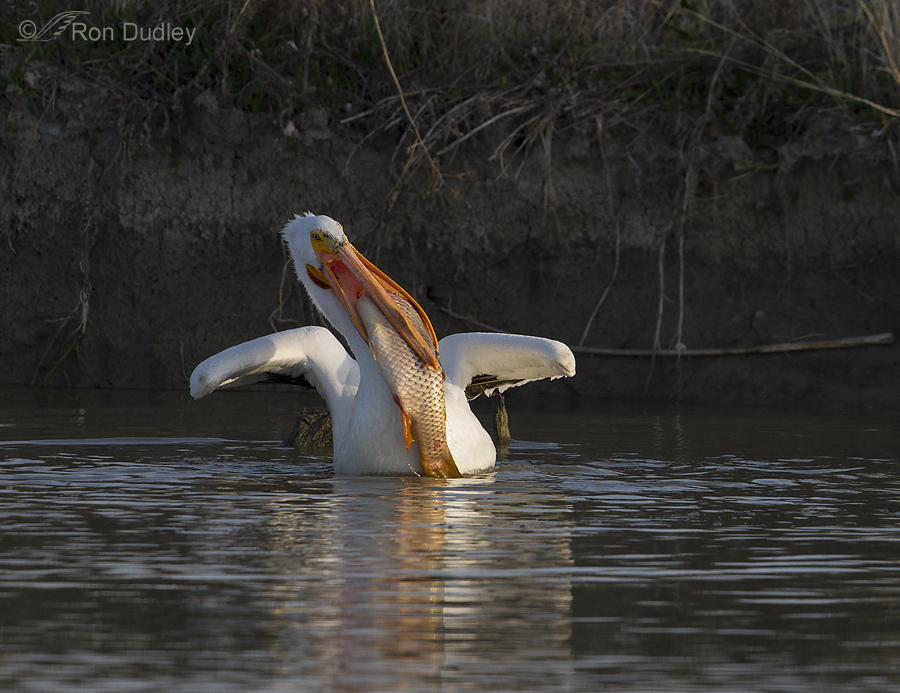
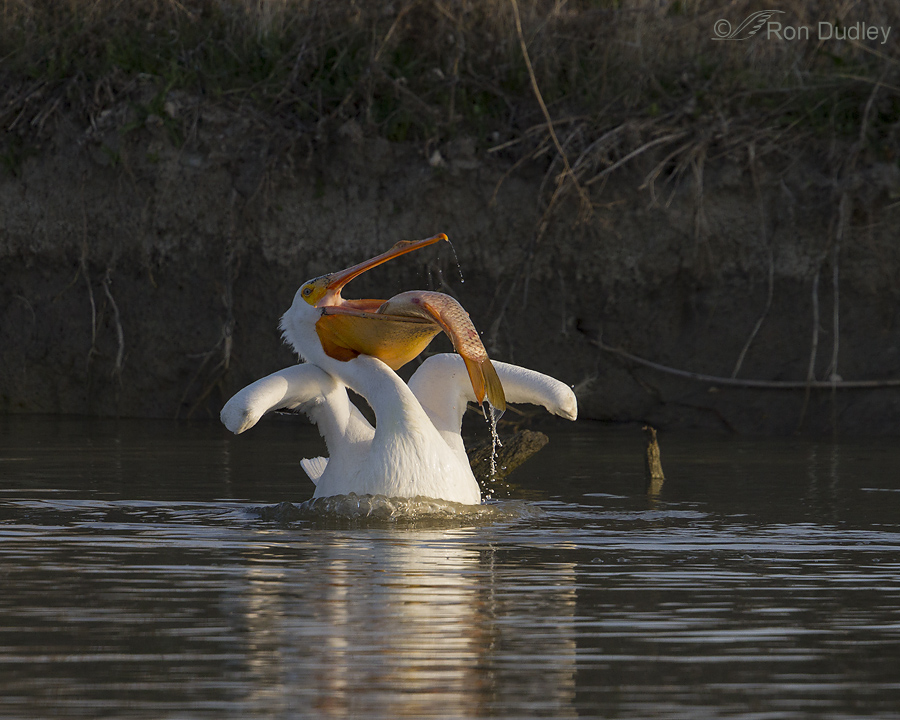
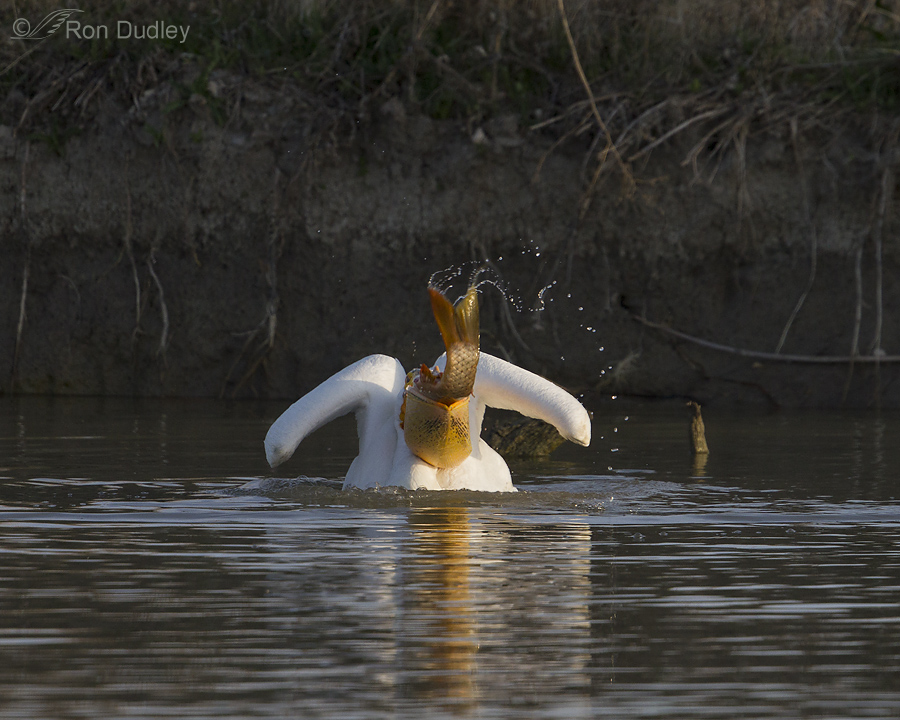
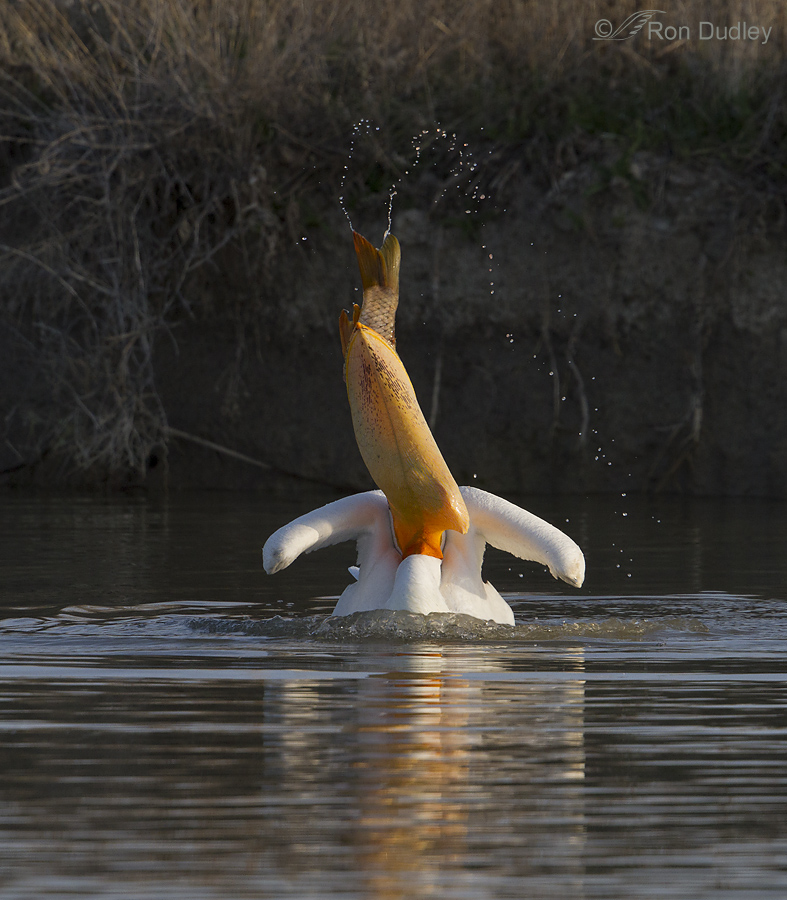
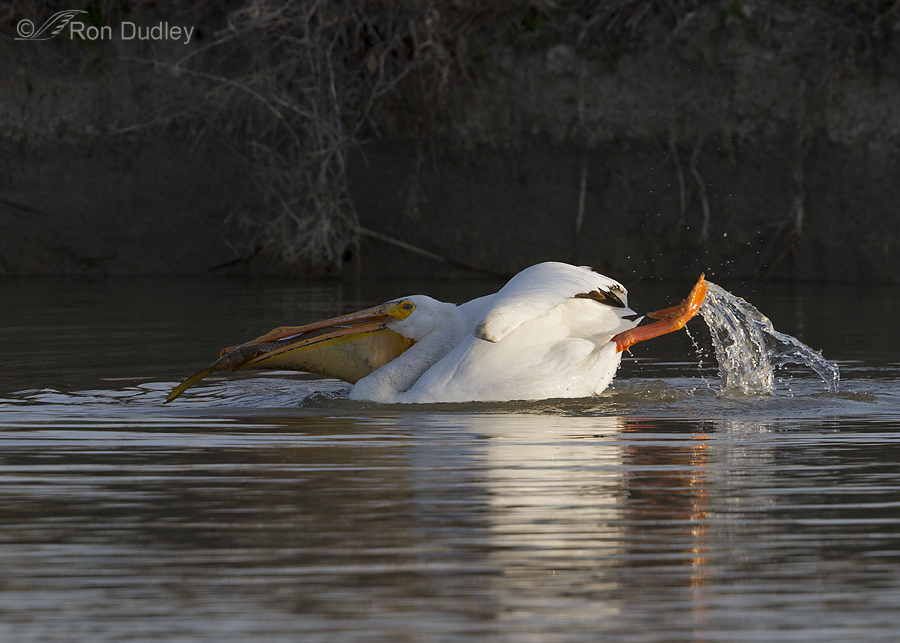
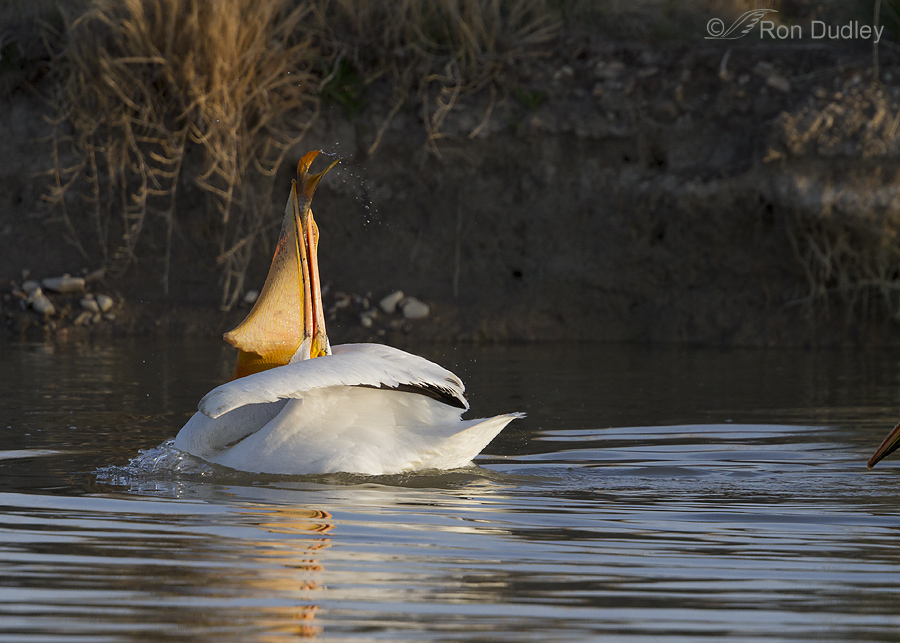
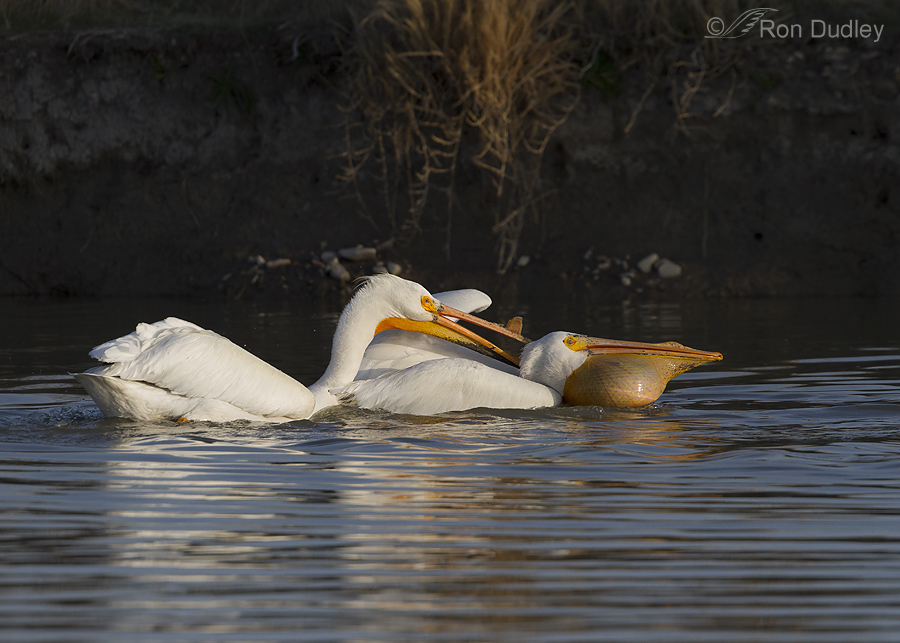
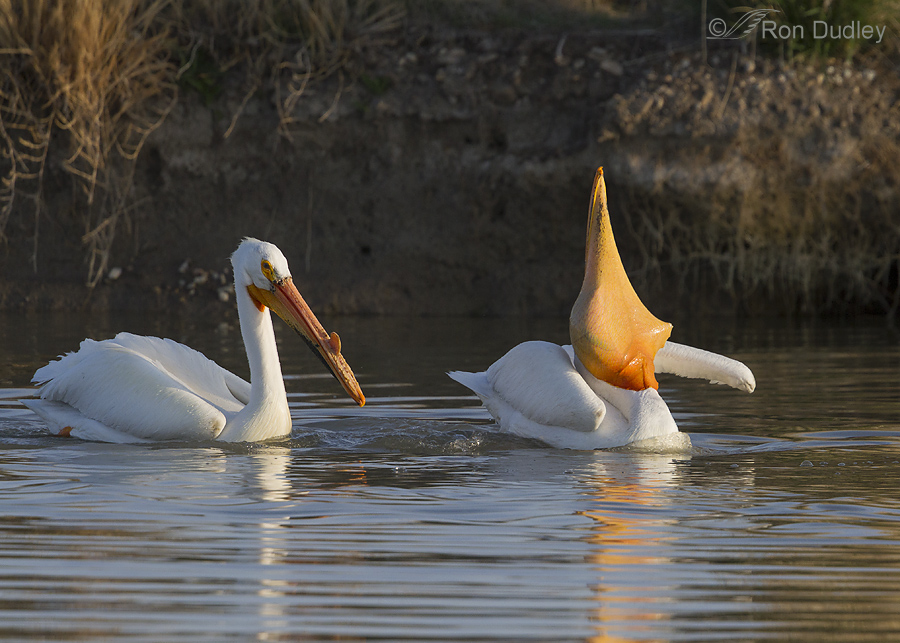
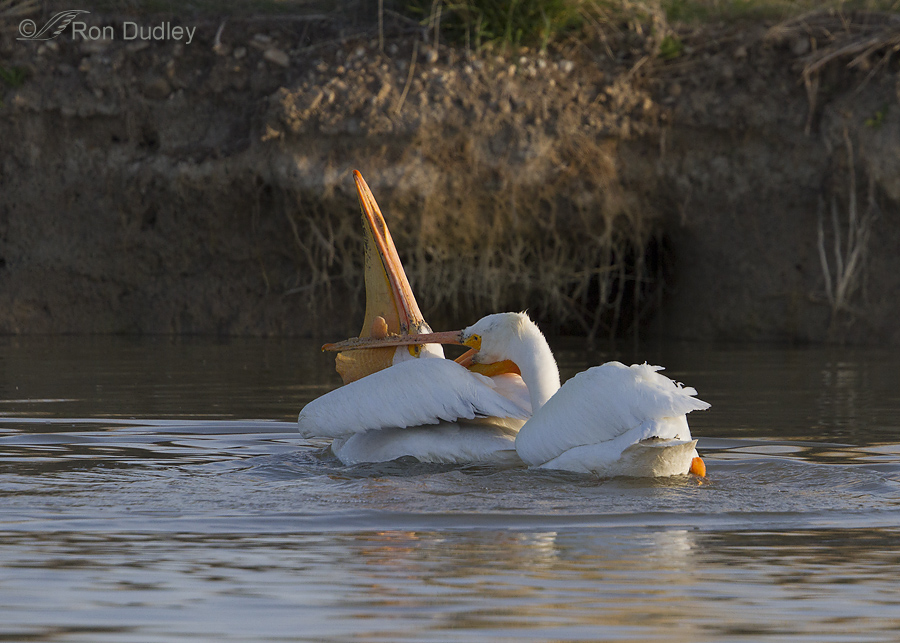
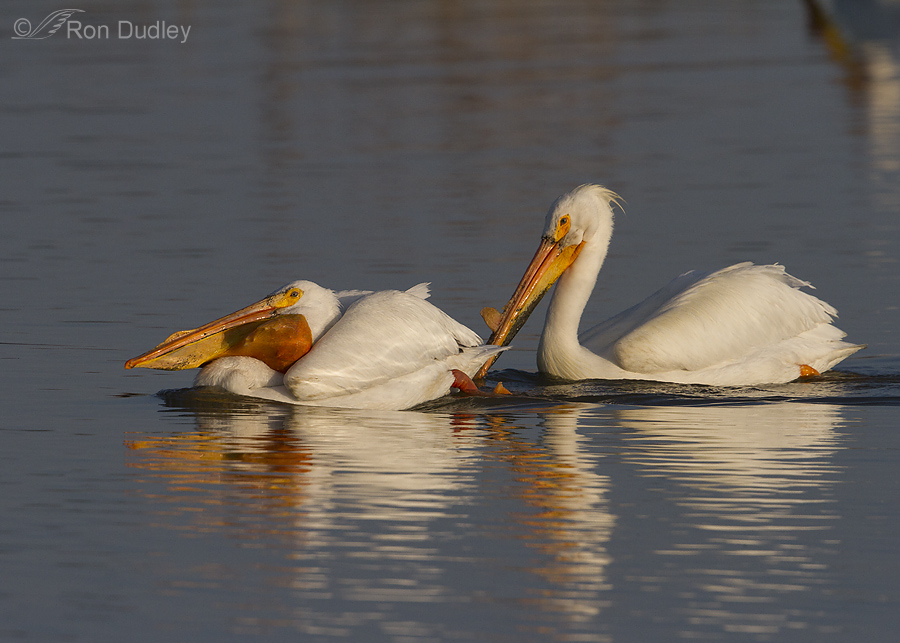
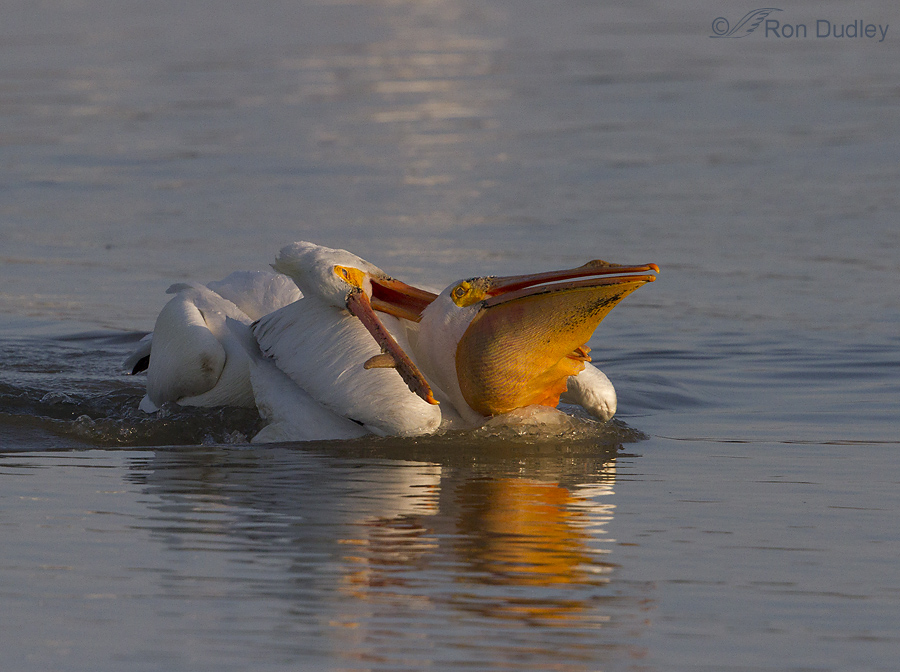
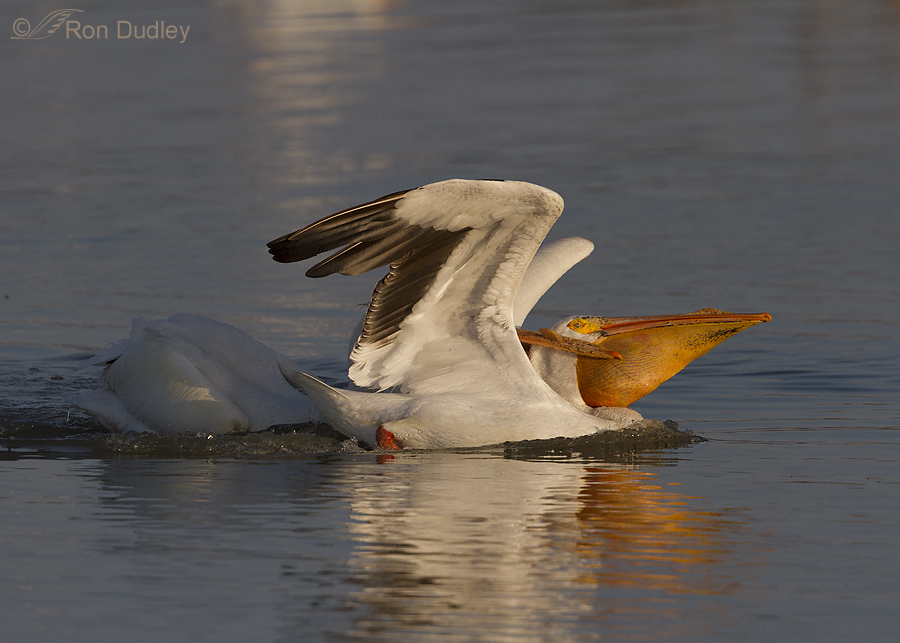
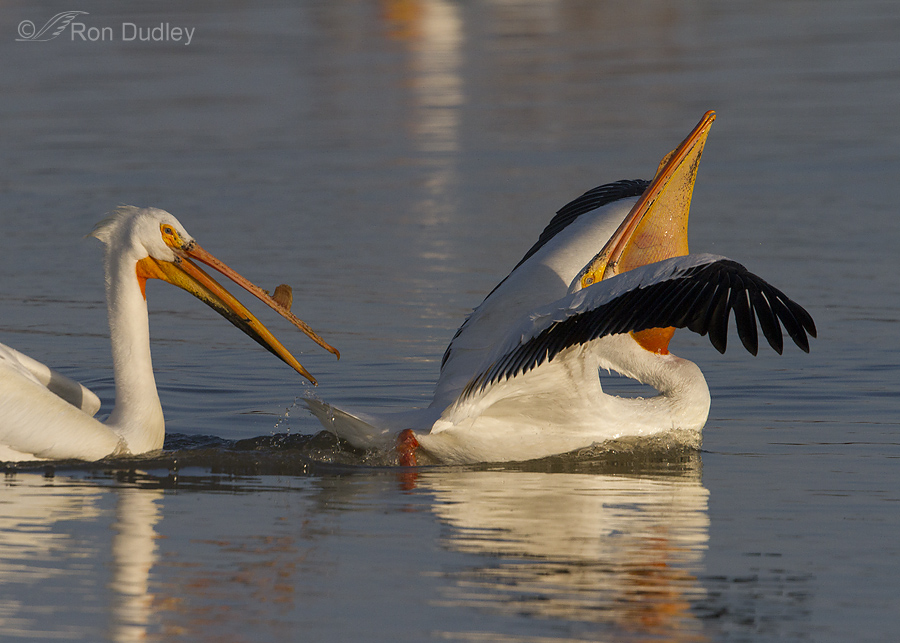
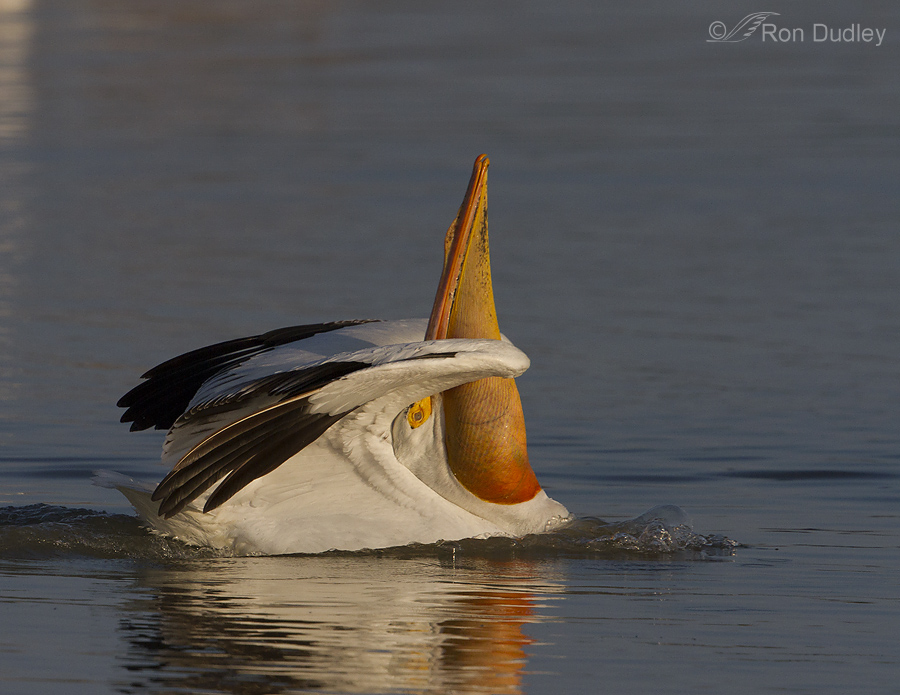
This is, without a doubt, one of the most interesting series of photos you’ve posted. In a lot of the pictures it’s hard to tell that I’m looking at a pelican. Thanks for a good chuckle.
Great sequence Ron! One would think that an experienced fish eating pelican would know it’s limits, but maybe it takes an attempt like this to understand what they are.
What an amazing series to come home to!!! Didn’t know whether to laugh or to cry…poor hungry bird… whose beak could hold more than his bellican!
Absolutely amazing! Thanks for sharing Ron!
Charlotte
As a pelican freak here on the Texas Gulf Coast, I’ve also observed our Brown Pelicans taking on fish that I was just certain the birds would never been able to swallow — but it’s amazing to watch them toss a fish around in their pouch, kind of like a pizza, to get it into the right position before swallowing. It’s also been harrowing watching the large fish going down their necks (one wonders how they can breathe during the swallowing process). I’ve got a series of a 2 yo Brown who got himself a nice big (whole) fish, and as I was shooting the images I was certain I was watching the impending death of the bird and was getting prepared to jump in and help it. Ha. That youngster took care of business, no problem; he certainly didn’t need me. On another note, down here we enjoy hosting your Whites for the winter; I’ve gotten several spectacular images of them, especially when they mix with the Browns. Sorry to see them go for the season, but I know their summer homes will enjoy them.
Just noticed your comment! It would be cool to see the 2year old (younger) pelican eating the big fish! Just if you still have those shots. Have a good one!
Respond: Mexicankyle35@gmail.com
I’m with Dick. Does the rounded rather than squared off, protuberance on the beak mean this is an adult female in breeding condition?
What an incredible series. And thank you so much that your photographer instinct was in full operation mode. I suspect I would have just watched – with my mouth open nearly wide enough to take that carp.
Your last line made me laugh again, Elephant’s Child. Thanks.
Great finish to this amazing series, Ron! Superb quality maintained throughout all the photographs. Not easy to do with so much action involved. There is almost an “Aesop’s Fable” quality about this episode!
Thanks very much, Wally.
Wow! Love the drama, thanks for the great images!
Glad you liked them, Tana. Thank you.
utterly amazing event … so incredibly well photographed … I think National Geographic should be knocking on your door for the rights to these pics and the great story!!!!!!!! LOVED it!!!
I doubt I’ll be hearing from NG, Lois but your kind words were the next best thing!
Fascinating – a violent conflict over something too big to swallow anyway. Clearly this is not behavior that’s limited to us humans!
You’re right, Alison. An interesting observation.
What a great story through your amazing photos!! I could hardly wait to get up this morning to see how the story played out!! I have never seen a pelican in person. Thanks for teaching me so much about this species.
You’re very welcome, Ellen. I wish you could see these birds, especially when large flocks of them are soaring overhead. It’s quite a sight!
Great series, which my Daddy was alive to see this series, he would recite THE poem when would cross the ship channel and see the pelicans.
Jo, that poem kept going through my head when I was writing this post!
The final lesson, too big for the esophagus and thus the stomach! The lack of a horn mean it’s a female? Or, the horn just hasn’t developed as yet?
Great series Ron, wonderful lesson in bird (pelican) behavior. Many thanks.
Dick, Both sexes develop “horns”. I wondered if the very underdeveloped horn on this one means it’s a young bird but that’s only a guess.
Wow! your shots are always amazing, but this series takes it to an even higher level than I knew existed.
Such a stunning, amazing, interesting series, thank you!
That’s high praise, Bill. Thanks very much.
Wow! Always interesting and beautiful. Thanks Ron for a Continuing Education!
I guess the teacher in me still comes out, Brett. Thanks.
Do you think the attacking pelican was the original finder of the carp from yesterday’s post?
No, Michele. You can tell from the shape of their “horns” that they’re different birds.
I am speechless. Great shots. Congratulations Ron.
Thank you, Jorge.
Amazing series of shots. What a wonderful opportunity to see. Thank you for capturing these images and sharing the experience.
Thanks very much, Rich.